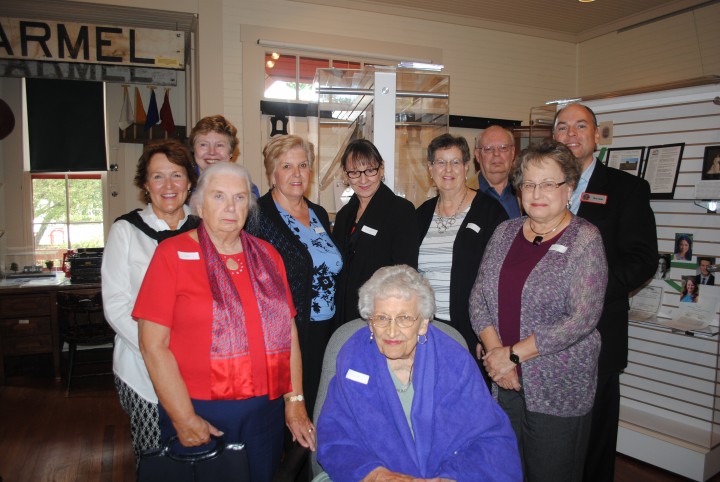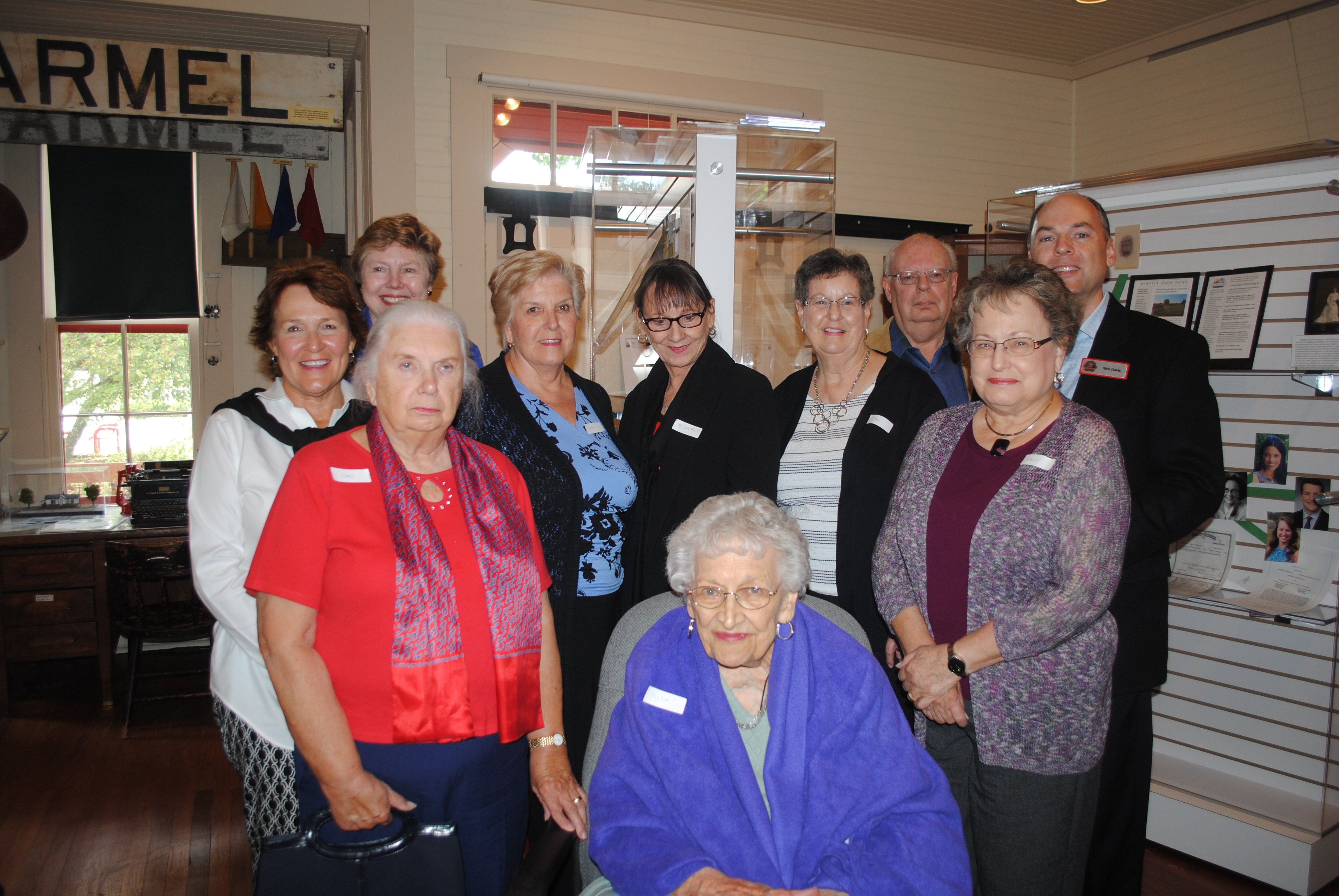
By Mark Ambrogi
Like the city itself, the Carmel Clay Historical Society has continually grown since its inception 40 years ago.
The CCHS’s first major project was the preservation of the Monon Depot, which was built in 1883. The CCHS is housed in the Monon Depot Museum. The nonprofit serves as the repository for documents, photographs and information of Carmel’s 178-year history.
Many of the longtime CCHS members, including two charter members, R. Carol Skinner and Beverly Weaver, talked about the history of organization before the election of officers and board members on Sept. 13.
At first Weaver wondered how much history there could be in a small town, but she found plenty.
“Now it’s a city, we have mayors, and it’s wonderful,” Weaver said.
Skinner, an artist, has done a lot of artwork for the organization through the years. Skinner recalled the modest beginnings of CCHS.
Former CCHS president and board member Fred Swift wasn’t involved in CCHS from the beginning but knows there is another reason it was started.
“When the organization was established, it was done at least partially for the national bicentennial the next year,” Swift said. “Carmel and every community probably was encouraged to have a local part in the bicentennial.”
For years, Carmel elementary school students have taken CCHS-guided tours on field trips.
Debbie Gangstad, a former second grade teacher, said an important part of the tour is teaching the children that a community doesn’t just happen.
“It’s very important for the children to understand that there were Quaker influences that made a difference in Carmel,” Gangstad said. “The Monon train made a difference coming through Carmel. Later when Keystone came through that made a difference. I think part of what I try to convey to the children is the way the community was built is very important, because education was always valued and still is. For that reason I feel like our community has thrived and people have wanted to be here.”
Ginny Terpening, a retired teacher, said during the walking tour for second graders they show the children enlarged photographs.
“We walk down where the grain elevator was and we have a big picture of the grain elevator,” Terpening said. “We have a picture of the lumber yard, and there are houses now. We walk down to the corner where the post office used to be and talk about how Carmel has changed. Carmel is really big and this post office was small.”
Nancy Childs said board member Jim Burrell, a retired Carmel Clay Schools administrator, also leads a tour for adults as well as children.
“He always says add in anything you remember,” Childs said. “So some of us that have lived here a long time will ‘I remember this.’”
The adult and families free tours are held the last Sunday of each month. The museum is open February through October from 5:30 p.m. to 7:30 p.m. on Fridays; 1 p.m. to 4 p.m. and 6 p.m. to 9 p.m. on Saturdays and 1 p.m. to 4 p.m. on Sundays.
For more information, visit carmelclayhistory.org.



